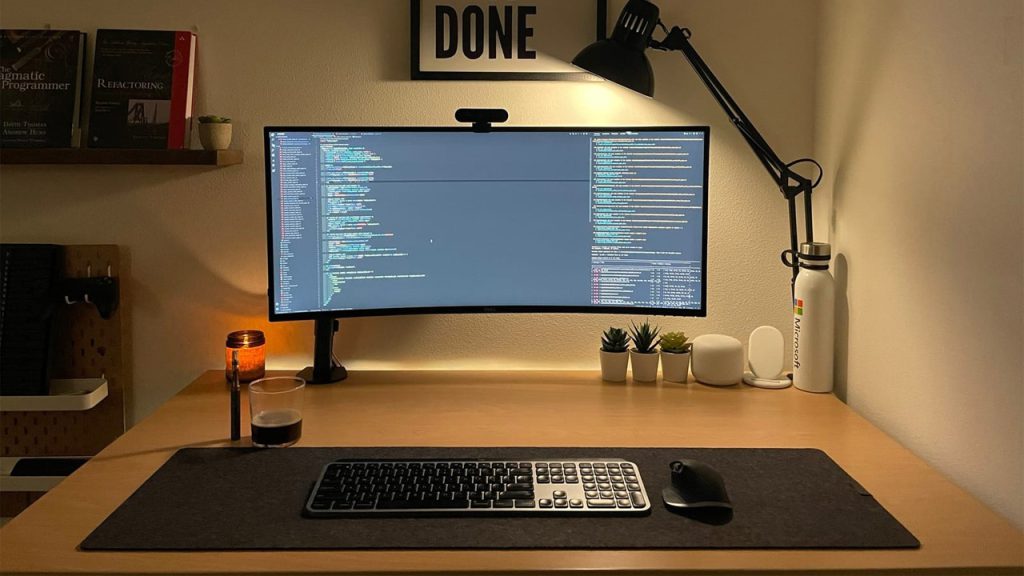Tutorials are a great way to learn new concepts, but depending on them and using them incorrectly can get you stuck in tutorial hell. Although this gives you a sense of security and progress, at some point, you come to the conclusion that you are stuck in a loop. Days and weeks go by, one video after another, one tutorial after another, until you realize that this is exactly what the hell is.
What is the hell of education?
Imagine that you have just finished a tutorial and followed everything the instructor said and did. Now it’s time to use this knowledge to make something yourself. Starting a new project and thinking about writing code on your own, but you don’t know what to do or how to get started. So you start the next training and soon realize you’ve completed a lot of training, but you still don’t know when you’re ready.
Training hell is nothing but getting caught in this endless loop of watching one programming tutorial after another. Completing tutorials gives you a false sense of accomplishment and makes you think you’re learning how to code. The feeling is totally addicting and makes you want to learn more, but as soon as you try to build something without a tutorial, you realize you haven’t really learned anything. So, you feel that the previous tutorial wasn’t good enough, and you look for another tutorial and continue this endless routine by seeing more tutorials. Doesn’t this sound familiar?

The big problem here is that you’re just following and co-coding what’s already been created. In other words, you’re not thinking about the problem while training and not analyzing how to fix it because that’s already been done by the training creator. So, when you try to write a few lines of code by yourself, get surprised that you can’t. You think that you are not prepared enough and start the next tutorial believing you will be more prepared after that.
Why do we get caught in the hell of education?
We know what education hell is, but why do we stay there?
- Training is not risky. You follow the instructions and implement them. Even if you make a mistake somewhere, instructors have already provided you with the code on GitHub. You copy and paste the code, and everything will be fine. In simpler terms, tutorials seem to be a safe house.
- Tutorials give you a sense of learning and progress. They also give you measurable progress. For example, you think to yourself, “This tutorial is 10 hours long, so if I spend 2 hours a day, I can learn C# in a week!” Or “A 9-hour tutorial to master ReactJS! Great! I can learn ReactJS in just one day.”
- Another reason for being stuck in hell is Imposter Syndrome. Imposter syndrome convinces you that you’re not ready to code on your own. So you keep training until you feel ready.
Behind the scenes of training
Let’s think about it. When we watch a tutorial, what we’re really seeing is a finished product. An educational film is something that has been prepared, and the producer has put a lot of effort into it before showing it to the audience, just like the teacher’s lectures in school or university. The biggest difference between the creator of a tutorial and its viewer is that the viewer hasn’t put effort and thought into making that app for weeks or maybe months.

So when watching a tutorial, you should understand that what you’re watching is a final, polished version. The missing part is all the hard work that the tutor put into it. This is just like front-end and back-end development. We only see what the front-end developer wants, but there’s a lot behind the back-end that we can’t see.
Should I stop watching tutorials?
Tutorials can be a great learning tool if you use them the right way; otherwise, you’ll become dependent on them, and you won’t be able to code yourself. It’s not bad to watch tutorials. What’s bad is to keep watching them without trying to build your own projects.
Some of you might be saying, “I can’t stop watching tutorials because I’m not ready to code myself.” Let me tell you this, when you’re a beginner, you never know when you’ll be ready to start coding on your own. The only way is to start writing code and develop your problem-solving and critical-thinking skills. These are the things that will make you grow as a developer, and unfortunately, no video tutorial will teach you these.
It’s only when you start doing your own project that you’ll feel like you’re really learning, and it won’t be easy, but you’ll be proud of yourself when you finish your first project.
Freedom from the hell of training
Now that we understand what training hell is and what the reasons are for getting stuck, let’s look at some ways to avoid it. At first, you need to get rid of it to admit that you are involved. Then, you must evaluate your learning progress and be honest with yourself. Ask yourself this question:
Am I constantly watching tutorials without actually trying to build my own project?
If you answered yes to this question, congratulations. You have taken the first step to escape the hell of education.

Now, let’s discuss some methods and tips that may help you to get out of training hell. It will be very difficult to stop watching tutorials and start building projects on your own. So we have to go step by step.
Think about the project before watching the tutorial
Many beginners start watching video tutorials without thinking about the project. An important part of the development process is thinking about the problem before implementing it.
Let’s say you want to see a tutorial on how to create a random background color changer. Your main thought process might go something like this:
- Create a collection of different colors.
- Create a button that changes the background color when clicked.
- Create some sort of random function to pick the color.
Even if you don’t know how to implement them in code, at least you’re thinking about the problem.
Try to make it yourself first
Many people are afraid of building something on their own due to not having the skills or knowledge, but before watching a tutorial, you can at least try something and try to translate your thoughts into code.
If you google collection of colors JavaScript, one of the results will be an array, or if you google random function JavaScript, Math.random() will be the first result.
This way, you slowly begin to translate your thoughts into code. It’s okay if your code isn’t completely correct. The goal is to learn how to research and think about the problem.
Take time to learn
Now that you’ve thought about the project and started trying things out on your own, you’re ready to watch the tutorial, but it’s not recommended to sit through the entire video without stopping. Your brain can’t handle all that information at once.
Don’t rush and code along with the video tutorial. Some course creators (especially the more experienced ones) challenge you to implement parts of the project on your own before showing you their solutions. Take a few minutes and try to solve their challenge. Although you’ll likely fail (you’re learning anyway), whether you fail or succeed, you’ll learn a lot more than coding while watching a tutorial.
Another thing you can do is to pay full attention to the tutorial (don’t code at the same time); after watching part of the tutorial (e.g., 5-10 minutes), stop the video to process what you learned and start coding yourself. That way, you focus on one thing at a time, first on the theory and then on the code. This also gives you a chance to research concepts that confused you in the video. Asking questions and researching are important skills to become a successful developer.
These strategies will help you boost your confidence. You will soon have more confidence to start your project.
Try to explain what you have learned to someone

When you watch an educational video, try to explain what you learned to your friend. Explaining to someone else will tell you if you really learned it or not. Many experienced developers encourage beginners to explain what they learn to others as another way to practice.
Build the project that you have been taught by yourself
After completing the tutorial, take some time to process what you’ve learned. Then go back and try to build the same project, but this time without following the tutorial. This way, you’ll practice problem-solving skills without having to build a project from scratch on your own.
You can even try different methods than what the instructor used in the tutorial. For example, if the instructor used an if/else statement, you might want to use another statement, or if the instructor used a simple loop, a foreach loop might work. You can also add a feature to the project. For example, if you’ve learned how to build a single-page website, you can convert it to a multi-page website.
Rebuilding the project in your own way will give you the confidence to build your own project. It also teaches you how to research, ask questions, and debug code.
Watch live coding videos
Many experienced developers code live. You can watch them from time to time (YouTube or Twitch would be good options). This will help you understand their thought process. You will see that even for them, not everything works from scratch. They also have many mistakes and bugs and also use google and other sources a lot. You will see them taking notes and trying different solutions. Things that are completely normal, and any developer does regardless of their level of experience.
Live coding videos will show you a more realistic process than what is shown in the tutorials and help you understand that not everything is as easy as it seems in the tutorial videos.
Create your own project

All of the tips mentioned earlier will help you build your confidence in coding, but ultimately you’ll only learn when you build your own projects and find solutions to problems you’ve never seen before. There is no other way. So you have to step out of your comfort zone and create your own project. It will definitely not be easy, and you will face many problems during it, but believe me, doing this will be a great success.
Just don’t try to jump into heavy projects at once; no one can do that. If something is too much beyond your ability level, chances are you’ll lose motivation and quit very quickly. So there’s no need to build the next Amazon or Netflix. Start with small projects. You will gradually feel more capable and try bigger projects.
If you encounter a problem, don’t look for another education, for God’s sake! Ask your question on Stack Overflow or Reddit , there are many people there who can help you. There are millions of software developers around the world working on a variety of products. So it must be someone who has already faced a very similar problem to yours. Remember that Google is your best friend at these moments.
Final word
Escaping training hell is probably one of the scariest things you’ll do in your career as a developer because you have to stop depending on other people’s work and start creating your own. You have to start thinking and analyzing problems on your own. Yes, it is very scary, but it is worth it. You must learn to overcome your fears because, in the end, it is only by overcoming these fears that you truly grow.
As a developer, you have to understand that almost no project is going to be easy. You will face many problems for which you will have to find a solution. Remember that video tutorial creators, just like us, have to practice a lot and put in a lot of hours to be able to deliver a quality tutorial online. They give you the first tools to become a developer, and they give you great tips and tricks, but what they can’t show you is all the hours of practice and effort that go into building the project they give you.
These pieces of training are like a pair of crutches that help you walk, but if you want to run, you have to put down the cane and take a step. It may seem difficult, but be patient. You will soon be out of training hell.



